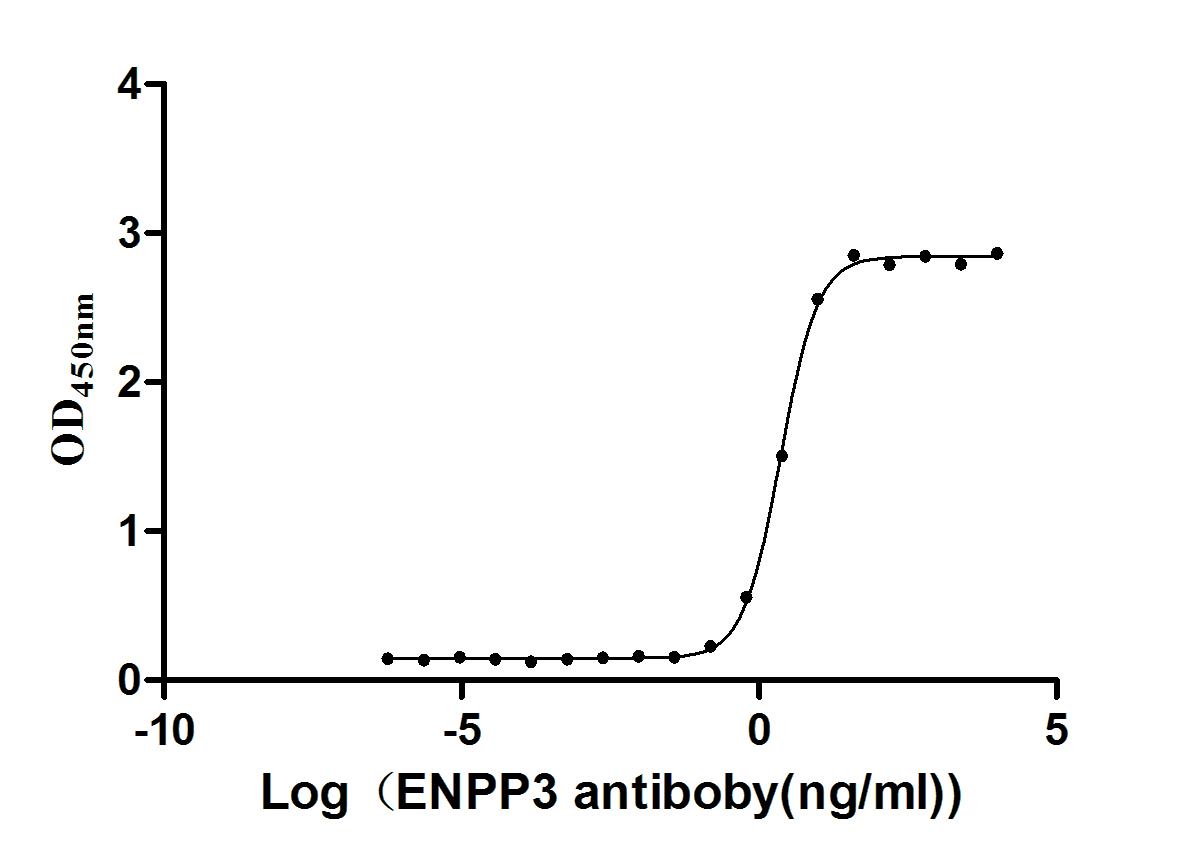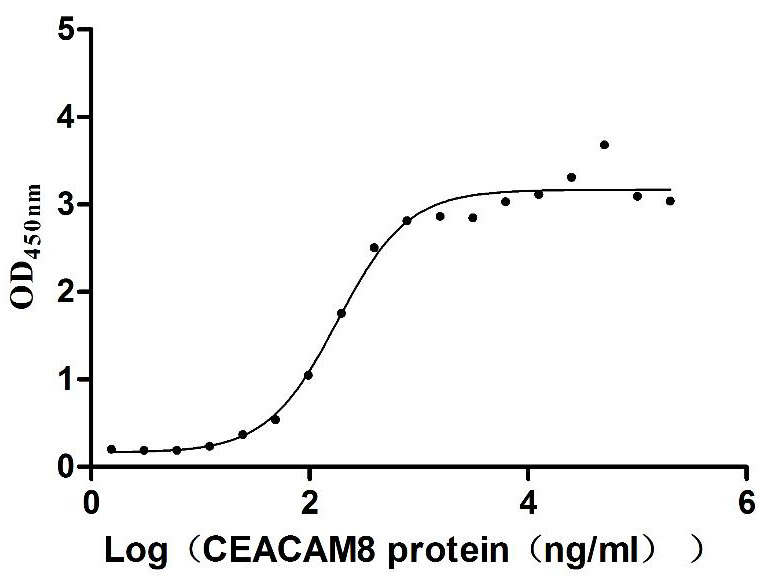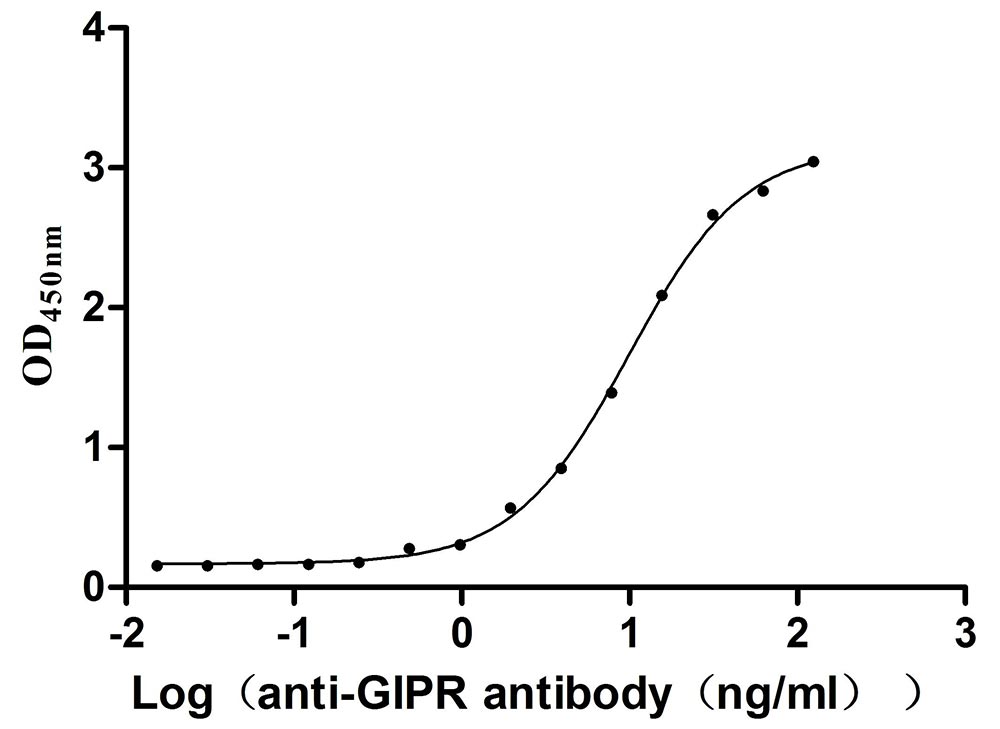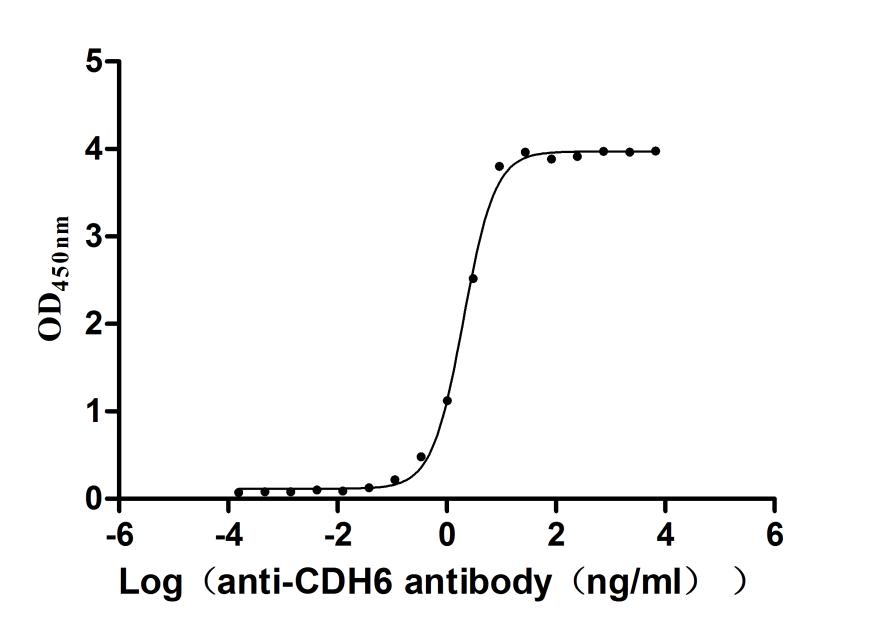Recombinant Human Neuronal PAS domain-containing protein 2 (NPAS2), partial
-
中文名稱:人NPAS2重組蛋白
-
貨號:CSB-YP860777HU
-
規(guī)格:
-
來源:Yeast
-
其他:
-
中文名稱:人NPAS2重組蛋白
-
貨號:CSB-EP860777HU
-
規(guī)格:
-
來源:E.coli
-
其他:
-
中文名稱:人NPAS2重組蛋白
-
貨號:CSB-EP860777HU-B
-
規(guī)格:
-
來源:E.coli
-
共軛:Avi-tag Biotinylated
E. coli biotin ligase (BirA) is highly specific in covalently attaching biotin to the 15 amino acid AviTag peptide. This recombinant protein was biotinylated in vivo by AviTag-BirA technology, which method is BriA catalyzes amide linkage between the biotin and the specific lysine of the AviTag.
-
其他:
-
中文名稱:人NPAS2重組蛋白
-
貨號:CSB-BP860777HU
-
規(guī)格:
-
來源:Baculovirus
-
其他:
-
中文名稱:人NPAS2重組蛋白
-
貨號:CSB-MP860777HU
-
規(guī)格:
-
來源:Mammalian cell
-
其他:
產(chǎn)品詳情
-
純度:>85% (SDS-PAGE)
-
基因名:NPAS2
-
Uniprot No.:
-
別名:Basic helix loop helix PAS protein MOP4; Basic-helix-loop-helix-PAS protein MOP4; bHLHe9; class E basic helix loop helix protein 9; Class E basic helix-loop-helix protein 9; FLJ23138; Member of PAS protein 4; Member of PAS superfamily 4; MGC71151; MOP4; Neuronal PAS domain containing protein 2; Neuronal PAS domain protein 2; Neuronal PAS domain-containing protein 2; Neuronal PAS2; NPAS2; NPAS2_HUMAN; PAS domain containing protein 4; PAS domain-containing protein 4; PASD4
-
種屬:Homo sapiens (Human)
-
蛋白長度:Partial
-
蛋白標(biāo)簽:Tag?type?will?be?determined?during?the?manufacturing?process.
The tag type will be determined during production process. If you have specified tag type, please tell us and we will develop the specified tag preferentially. -
產(chǎn)品提供形式:Lyophilized powder
Note: We will preferentially ship the format that we have in stock, however, if you have any special requirement for the format, please remark your requirement when placing the order, we will prepare according to your demand. -
復(fù)溶:We recommend that this vial be briefly centrifuged prior to opening to bring the contents to the bottom. Please reconstitute protein in deionized sterile water to a concentration of 0.1-1.0 mg/mL.We recommend to add 5-50% of glycerol (final concentration) and aliquot for long-term storage at -20℃/-80℃. Our default final concentration of glycerol is 50%. Customers could use it as reference.
-
儲存條件:Store at -20°C/-80°C upon receipt, aliquoting is necessary for mutiple use. Avoid repeated freeze-thaw cycles.
-
保質(zhì)期:The shelf life is related to many factors, storage state, buffer ingredients, storage temperature and the stability of the protein itself.
Generally, the shelf life of liquid form is 6 months at -20°C/-80°C. The shelf life of lyophilized form is 12 months at -20°C/-80°C. -
貨期:Delivery time may differ from different purchasing way or location, please kindly consult your local distributors for specific delivery time.Note: All of our proteins are default shipped with normal blue ice packs, if you request to ship with dry ice, please communicate with us in advance and extra fees will be charged.
-
注意事項:Repeated freezing and thawing is not recommended. Store working aliquots at 4°C for up to one week.
-
Datasheet :Please contact us to get it.
相關(guān)產(chǎn)品
靶點詳情
-
功能:Transcriptional activator which forms a core component of the circadian clock. The circadian clock, an internal time-keeping system, regulates various physiological processes through the generation of approximately 24 hour circadian rhythms in gene expression, which are translated into rhythms in metabolism and behavior. It is derived from the Latin roots 'circa' (about) and 'diem' (day) and acts as an important regulator of a wide array of physiological functions including metabolism, sleep, body temperature, blood pressure, endocrine, immune, cardiovascular, and renal function. Consists of two major components: the central clock, residing in the suprachiasmatic nucleus (SCN) of the brain, and the peripheral clocks that are present in nearly every tissue and organ system. Both the central and peripheral clocks can be reset by environmental cues, also known as Zeitgebers (German for 'timegivers'). The predominant Zeitgeber for the central clock is light, which is sensed by retina and signals directly to the SCN. The central clock entrains the peripheral clocks through neuronal and hormonal signals, body temperature and feeding-related cues, aligning all clocks with the external light/dark cycle. Circadian rhythms allow an organism to achieve temporal homeostasis with its environment at the molecular level by regulating gene expression to create a peak of protein expression once every 24 hours to control when a particular physiological process is most active with respect to the solar day. Transcription and translation of core clock components (CLOCK, NPAS2, ARNTL/BMAL1, ARNTL2/BMAL2, PER1, PER2, PER3, CRY1 and CRY2) plays a critical role in rhythm generation, whereas delays imposed by post-translational modifications (PTMs) are important for determining the period (tau) of the rhythms (tau refers to the period of a rhythm and is the length, in time, of one complete cycle). A diurnal rhythm is synchronized with the day/night cycle, while the ultradian and infradian rhythms have a period shorter and longer than 24 hours, respectively. Disruptions in the circadian rhythms contribute to the pathology of cardiovascular diseases, cancer, metabolic syndromes and aging. A transcription/translation feedback loop (TTFL) forms the core of the molecular circadian clock mechanism. Transcription factors, CLOCK or NPAS2 and ARNTL/BMAL1 or ARNTL2/BMAL2, form the positive limb of the feedback loop, act in the form of a heterodimer and activate the transcription of core clock genes and clock-controlled genes (involved in key metabolic processes), harboring E-box elements (5'-CACGTG-3') within their promoters. The core clock genes: PER1/2/3 and CRY1/2 which are transcriptional repressors form the negative limb of the feedback loop and interact with the CLOCK|NPAS2-ARNTL/BMAL1|ARNTL2/BMAL2 heterodimer inhibiting its activity and thereby negatively regulating their own expression. This heterodimer also activates nuclear receptors NR1D1/2 and RORA/B/G, which form a second feedback loop and which activate and repress ARNTL/BMAL1 transcription, respectively. The NPAS2-ARNTL/BMAL1 heterodimer positively regulates the expression of MAOA, F7 and LDHA and modulates the circadian rhythm of daytime contrast sensitivity by regulating the rhythmic expression of adenylate cyclase type 1 (ADCY1) in the retina. NPAS2 plays an important role in sleep homeostasis and in maintaining circadian behaviors in normal light/dark and feeding conditions and in the effective synchronization of feeding behavior with scheduled food availability. Regulates the gene transcription of key metabolic pathways in the liver and is involved in DNA damage response by regulating several cell cycle and DNA repair genes. Controls the circadian rhythm of NR0B2 expression by binding rhythmically to its promoter. Mediates the diurnal variation in the expression of GABARA1 receptor in the brain and contributes to the regulation of anxiety-like behaviors and GABAergic neurotransmission in the ventral striatum.
-
基因功能參考文獻:
- NPAS2 hypomethylation occurs at the early stage of PD and is a moderate biomarker for distinguishing PD patients from healthy subjects. PMID: 29353016
- NPAS2 has a critical role in HCC cell survival and tumor growth, which is mainly mediated by transcriptional upregulation of CDC25A. PMID: 28333141
- Aggregate genetic variation in circadian rhythm and melatonin pathways were significantly associated with the risk of prostate cancer in data combining GAME-ON and PLCO, after Bonferroni correction (ppathway < 0.00625). The two most significant genes were NPAS2 (pgene = 0.0062) and AANAT (pgene = 0.00078); the latter being significant after Bonferroni correction. PMID: 28699174
- Significantly, this study is the first to show that a variant copy number GGC repeat sequence in the NPAS2 clock gene associates with melanoma risk and which may be useful in the assessment of melanoma predisposition. PMID: 28799406
- CLOCK, ARNTL, and NPAS2 gene polymorphisms may have a role in seasonal variations in mood and behavior PMID: 26134245
- Genetic variations in NPAS2 might be a biomarker for a seasonal pattern in bipolar disorders. PMID: 25989161
- With whole-exome sequencing a novel mutation in NPAS2 was identified in a Turkish family with nonobstructive azoospermia. PMID: 25956372
- NPAS2 rs2305160 polymorphism does not appear to have any association with risk of chronic lymphocytic leukemia in our Pakistani population. PMID: 25227809
- distributions of allelic, genotypic, and haplotypic variants of NPAS2 (rs2305160 and rs6725296) were not significantly different between schizophrenic patients with and without RLS PMID: 24824748
- Two single nucleotide polymorphisms in RORA were associated with breast cancer in the whole sample and among postmenopausal women, and we also reported an association with CLOCK, RORA, and NPAS2 in the analyses at the gene level PMID: 24919398
- Functional rs1053096 and rs2305160 polymorphisms in the NPAS2 gene are associated with overall survival in transcatheter arterial chemoembolization-treated hepatocellular carcinoma patients. PMID: 24754267
- NPAS2, functioned as a potential tumor suppressor gene, could serve as a promising target and potential prognostic indicator for colorectal cancer. PMID: 24978311
- Variants in NPAS2 have been associated with seasonality and seasonal affective disorder, phenotypes that could reflect circadian rhythm disruption. PMID: 23449886
- Genetic variants of NPAS2 associate with seasonal affective disorder or winter depression. PMID: 22538398
- Convergent functional genomics allowed the identification of novel candidate genes, GRIK2 and NPAS2, involved in glutamatergic neurotransmission and the circadian rhythm, respectively, that are potentially associated with CFS. PMID: 21912186
- found a novel functional SNP (rs3739008) located at 3'UTR of NPAS2 and the C to T changing of the SNP may disrupt the binding of microRNA- (miR-) 17-5p and miR-519e to the 3'UTR of NPAS2 PMID: 21140207
- ARNTL and NPAS2 SNPs were associated with reproduction and with seasonal variation. PMID: 20368993
- Data demonstrate that NPAS2 is also a RORalpha and REV-ERBalpha target gene. PMID: 20817722
- A high level of NPAS2 expression was strongly associated with improved disease free survival & overall survival. The Ala/Ala, Ala/Thr, & Thr/Thr genotypes were also differentially distributed by tumor severity, as measured by TNM classification. PMID: 19649706
- A significant difference between patients with seasonal affective disorder (SAD) and controls is found for NPAS2 protein (471 Leu/Ser) indicating a recessive effect of the leucine allele on SAD susceptibility. PMID: 12655319
- the CLOCK(NPAS2)/BMAL1 complex is post-translationally regulated by cry1 and cry2 PMID: 16628007
- Our results demonstrate a robust association of the variant Thr genotypes (Ala/Thr and Thr/Thr) with reduced risk of non-Hodgkin's lymphoma. PMID: 17096334
- With autisitc disorder, haplotype analysis of two-marker haplotypes showed that in npas2 40 out of the 136 possible two-marker combinations were significant, with the best result between markers rs1811399 and rs2117714. PMID: 17264841
- a role of the circadian gene NPAS2 in human breast cancer, suggesting that genetic variations in circadian genes might be a novel panel of biomarkers for breast cancer risk. PMID: 17453337
- variations associated with seasonal affective disorder PMID: 17457720
- knockdown of NPAS2 significantly represses the expression of several cell cycle and DNA repair genes in breast and colorectal neoplasms. PMID: 18819933
- Variations in circadian genes are associated with serum levels of androgens and IGF markers, particularly NPAS2 rs2305160:G>A(Ala394Thr). PMID: 18990770
- The 1st list of direct transcriptional targets of NPAS2 comprises 26 genes that contain potential NPAS2 binding regions, 9 of which are involved in tumorigenesis. PMID: 19457610
顯示更多
收起更多
-
亞細胞定位:Nucleus.
-
數(shù)據(jù)庫鏈接:
Most popular with customers
-
Recombinant Human Insulin growth factor-like family member 1 (IGFL1) (Active)
Express system: Mammalian cell
Species: Homo sapiens (Human)
-
Recombinant Human Nectin-4 (NECTIN4), partial (Active)
Express system: Mammalian cell
Species: Homo sapiens (Human)
-
Recombinant Human Angiopoietin-2 (ANGPT2) (Active)
Express system: Mammalian cell
Species: Homo sapiens (Human)
-
Express system: Mammalian cell
Species: Homo sapiens (Human)
-
Recombinant Human Carcinoembryonic antigen-related cell adhesion molecule 6 (CEACAM6) (Active)
Express system: Mammalian cell
Species: Homo sapiens (Human)
-
Recombinant Mouse Gastric inhibitory polypeptide receptor (Gipr), partial (Active)
Express system: Mammalian cell
Species: Mus musculus (Mouse)
-
Express system: Mammalian cell
Species: Homo sapiens (Human)
-
Recombinant Mouse Cadherin-6(Cdh6),partial (Active)
Express system: Mammalian cell
Species: Mus musculus (Mouse)


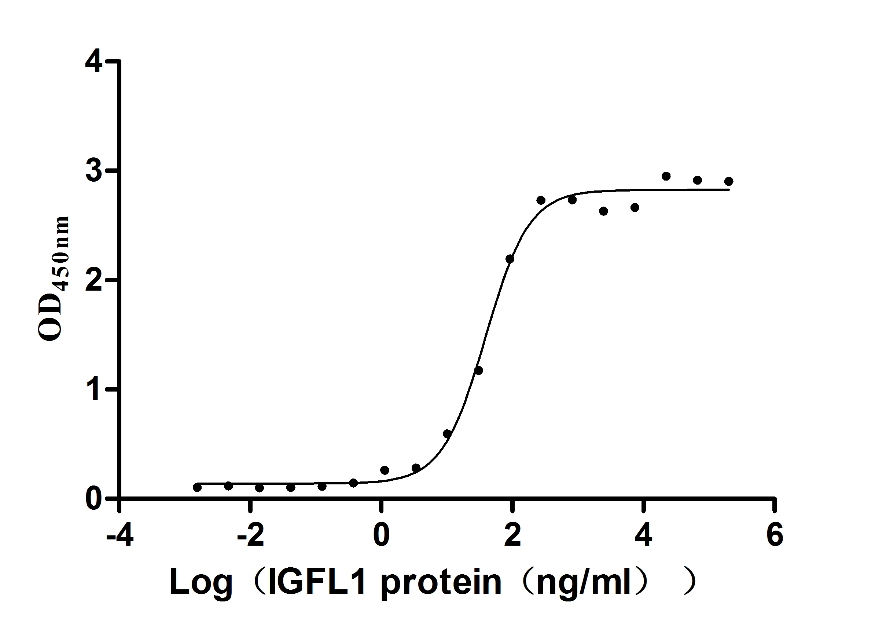
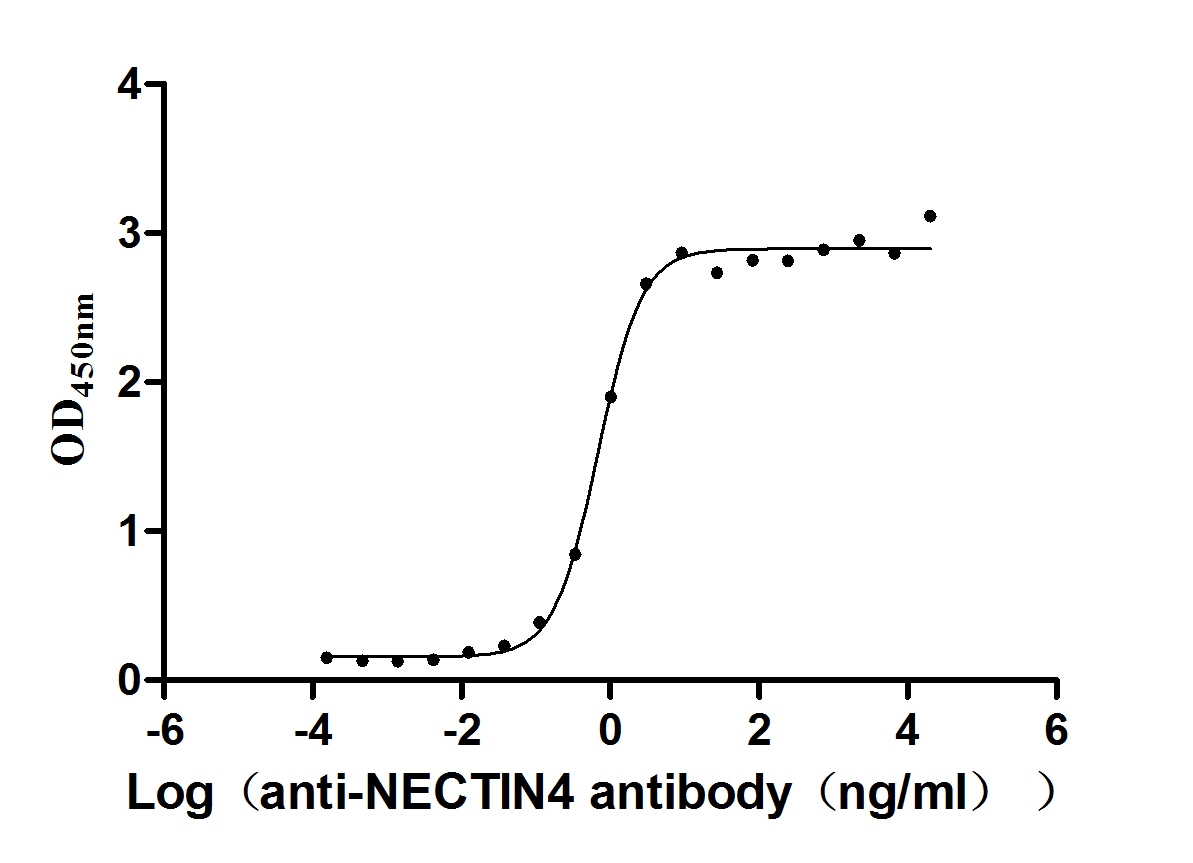
-AC1.jpg)
